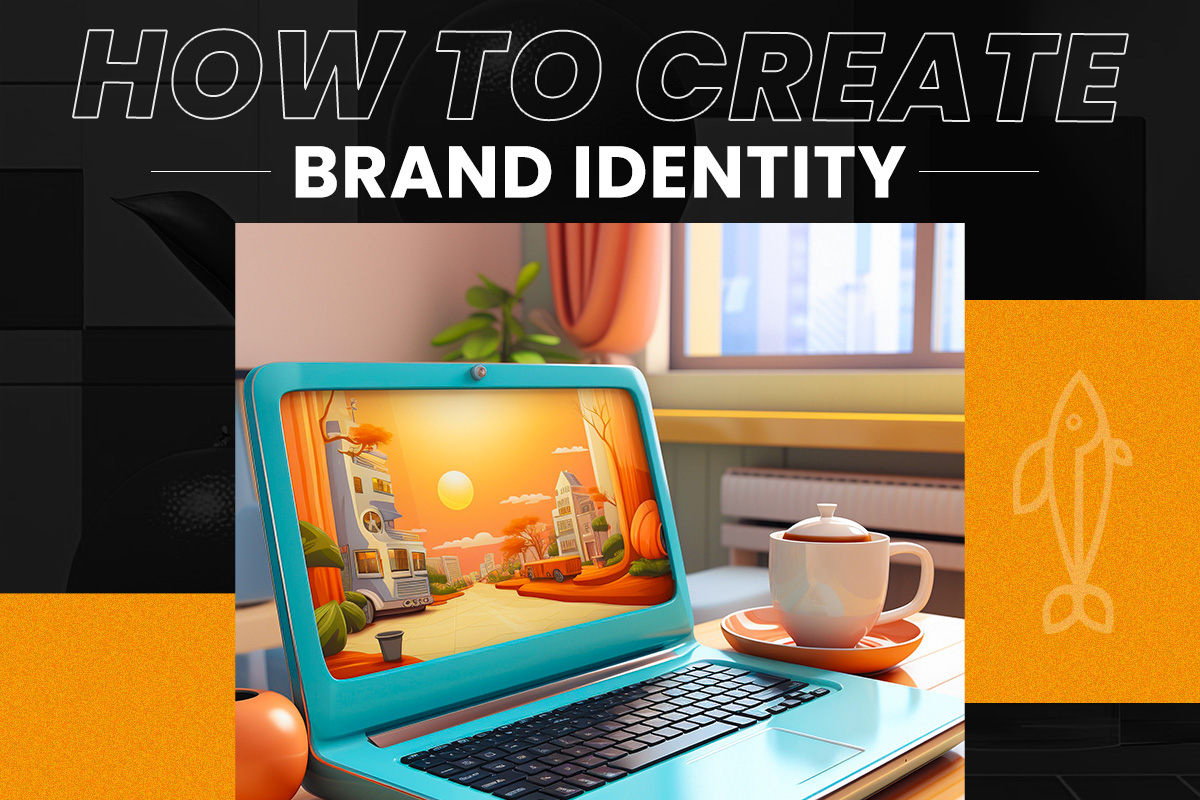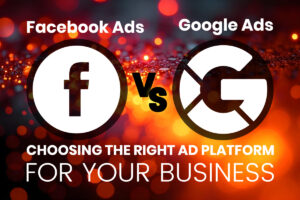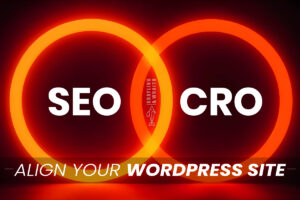You can go on Alibaba right now and order a hundred pairs of shoes in the exact make and model, made in the same factory by the same people with the same materials as leading fashion or apparel brands for as much as you can get for ONE name brand pair of shoes. This highlights the importance of Brand Identity, as it is the brand name that adds significant value to the product, not just the quality or materials.
So why haven’t Nike, Adidas, Gucci, and Louis Vuitton gone out of business?
Because modern consumers don’t buy products (or services). They buy ideas and causes. They buy brands.
The modern consumer wants to feel like they belong, like the products they spend their money on align them with a mission or a value system.
People like it because it’s Tesla. And that’s the rub.
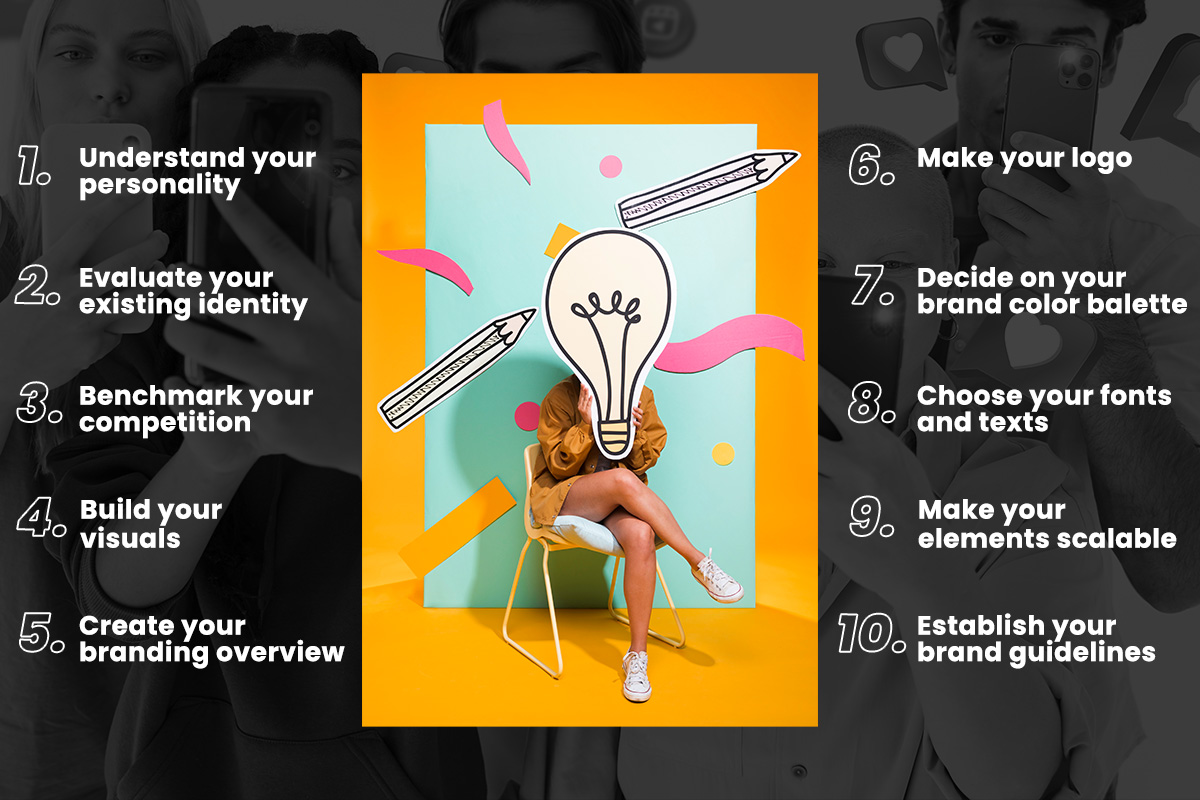
What is a brand? What is that intangible… thing-ness that makes it possible for us to write, “Well they buy Apple (not phones); they buy Tesla (not EV vehicles)?”… and have it be understood in regular, everyday conversation?
That’s brand identity. The most successful companies have extremely unique brand identities and that’s what people pay for when they spend their money.
With a plethora of brands bombarding consumers left and right, your company must stand out from the competition.
Building a strong brand identity is a multifaceted journey that takes time, a creative team, a vision, and a deep understanding of who you are, what you offer, and how you want the world to perceive you. You must also determine the best ways and methods to market your brand identity and how you embody it consistently.
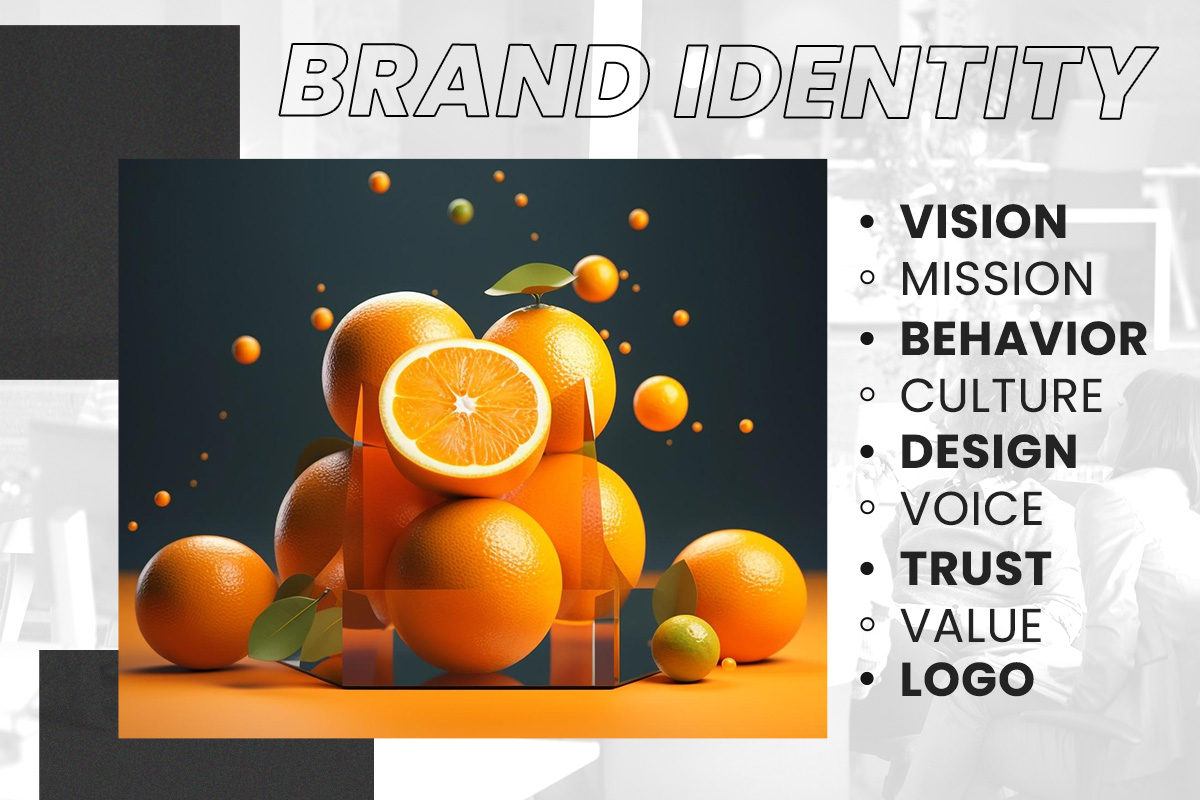
Defining Brand Identity
Branding identity is more than your logo and your color palette. It is the collection of all elements that represent your brand including your trademark, name, communications, and visual appearance.
A brand identity summarizes how your brand communicates to your audience. Brand identity differs from brand image and branding although these terms are used interchangeably. Branding focuses on the marketing side of a brand. On the other hand, a brand is a concept that helps your target market understand and connect to your company.
What makes you immediately identifiable by your target market is your brand identity. Your customers will connect your brand identity to your products or services. This identity establishes customer relationships, builds loyal customers, and influences how your audience sees your brand.
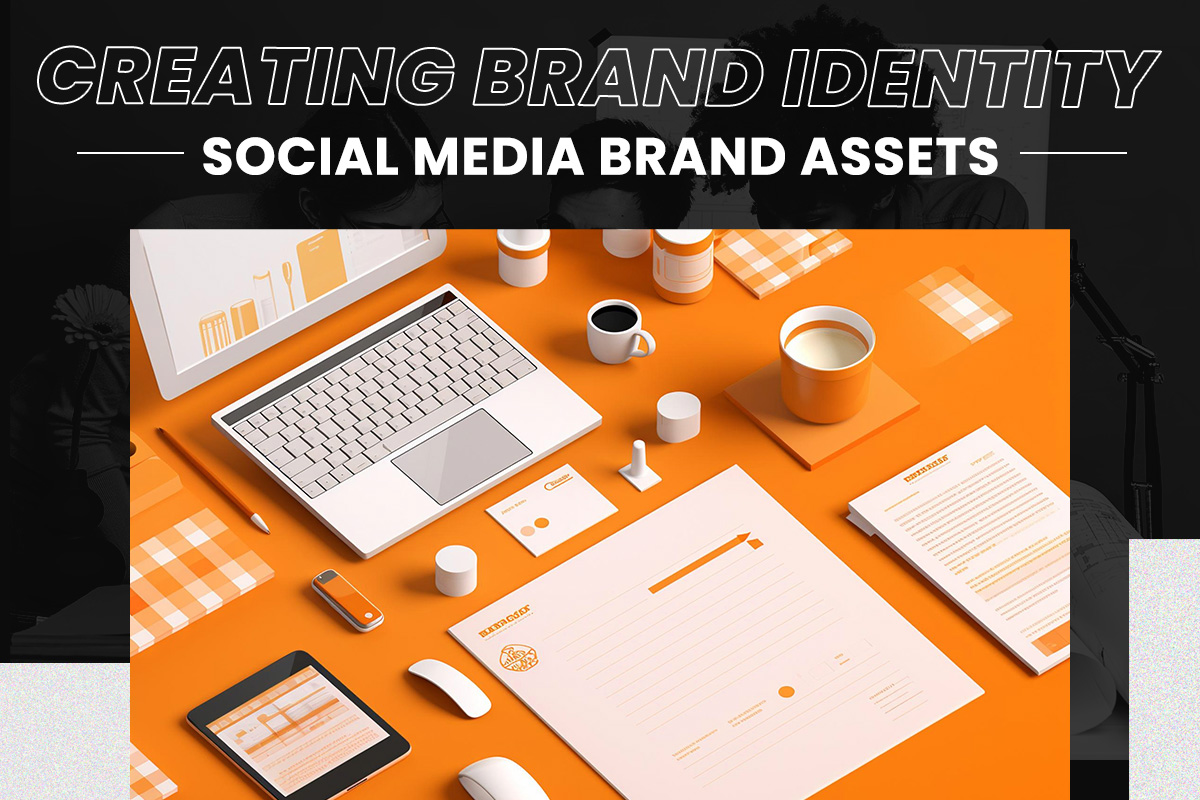
Visual Brand Identity
Typically, when people refer to brand identity, they mean visual identity. Visual identity encompasses an array of visual elements that represent and distinguish your brand. For instance, your logo, brand colors, images, fonts, icons, and graphical illustrations are examples of visual brand identity. These visible elements of your brand help customers recognize your brand. By merging these elements into a cohesive visual identity, you achieve brand recognition.
Moreover, visual identity is established after you have laid the foundation of your brand identity and brand style guide. It strengthens your core values and brand promise through visual channels. Consistent use of strategic visuals in communication enables you to share your brand story effectively. These visual cues trigger emotional responses from your customers through continued and consistent exposure over time.
Furthermore, companies need to leverage humans’ tendency to consume a large amount of visual content. With a lot of competition out there, you need to build a strong visual brand identity to stand out and be easily recognized by your target audience.
Components of a Strong Visual Identity

According to Brain Rules, people are likely to remember only 10% of the information they hear three days later. However, if that information is coupled with a relevant image, their retention increases up to 65%. So, what makes a strong visual identity? A strong visual identity must be:
Relevant
Do your visual elements speak to your target market? Do they elicit your desired emotions? Each visual component linked to your brand should be relevant to your target audience and purpose.
Unique
Establishing a visual identity sets your company apart from the competition. Hence, you must ensure that your visual elements distinguish your brand from the competitors and target audience. Are your visual elements easily identifiable and memorable by your target consumers?
Straightforward
Your visual design should easily be recognizable and understandable. Take the guesswork out of figuring out what your brand is all about by keeping your design simple, easy, and straightforward for clarity and retention.
Classic
Visual identities should be scalable and flexible as your brand grows. Come up with a visual identity that will live through time.
Practical
When your visual designs are scalable and flexible, they can easily be distributed to different channels. Your visual identity should be easily used across different platforms be it printed, digital, or interior spaces.

What is a Brand Voice?
Brand voice is how you talk to your audience and is distinguished in your brand’s way of communicating. The flow of your words, your language usage, and your personality sum up your brand voice. It sets your company apart from the competition and builds customer loyalty. Consumers are more invested in brands that evoke emotional responses and connections compared to those that rely on generic and disconnected content.
Brand voice is more than just stunning content, it’s also about how you deliver it. The way you present your brand to your target audience matters. Now, your brand voice doesn’t have to be formal, and rigid. It can have any style as long as it reflects your brand values and persona. You can be humorous, bold, confident, witty, intellectual, altruistic, or ominous. Channels, where you use your brand voice, including social media platforms, ads, press releases, website copy, email, and marketing materials.
What is a Brand Tone?
While brand voice and brand tone are interchangeably used, they have unique purposes. A brand voice speaks your values and unique perspective, it represents your brand personality. Brand tone, on the other hand, is how your brand communicates with your audience – from the choice of words and way of communicating. Your brand tone varies depending on the situation. To put it into context, as a human being, you have a unique personality and point of view that you carry throughout your daily interactions. However, the way you communicate with people in each interaction may vary.
Your brand voice must be consistent although you may need to shift your brand tone depending on your content and the situation. In brief, brand voice is the message and the brand tone is how you express it. The enthusiastic way you introduce a new product is a different tone from handling a customer complaint. You must document these tones for your style guidelines you can refer to in the future.
Your consistent brand voice pays off when your audience can recognize your brand through your content before they even see who posted it.
The Importance of Brand Identity
Strong brand identities are easily recognizable. You see a checkmark and you associate it with Nike or bitten apple and you know it’s Apple. Large companies such as Coca-Cola, Nike, Apple, etc invest in promoting their brands because they understand the importance of brand identity. A strong brand identity is more than beautiful packaging; it’s all about effective communication of your brand story.
Why Do You Need to Create a Brand Identity?
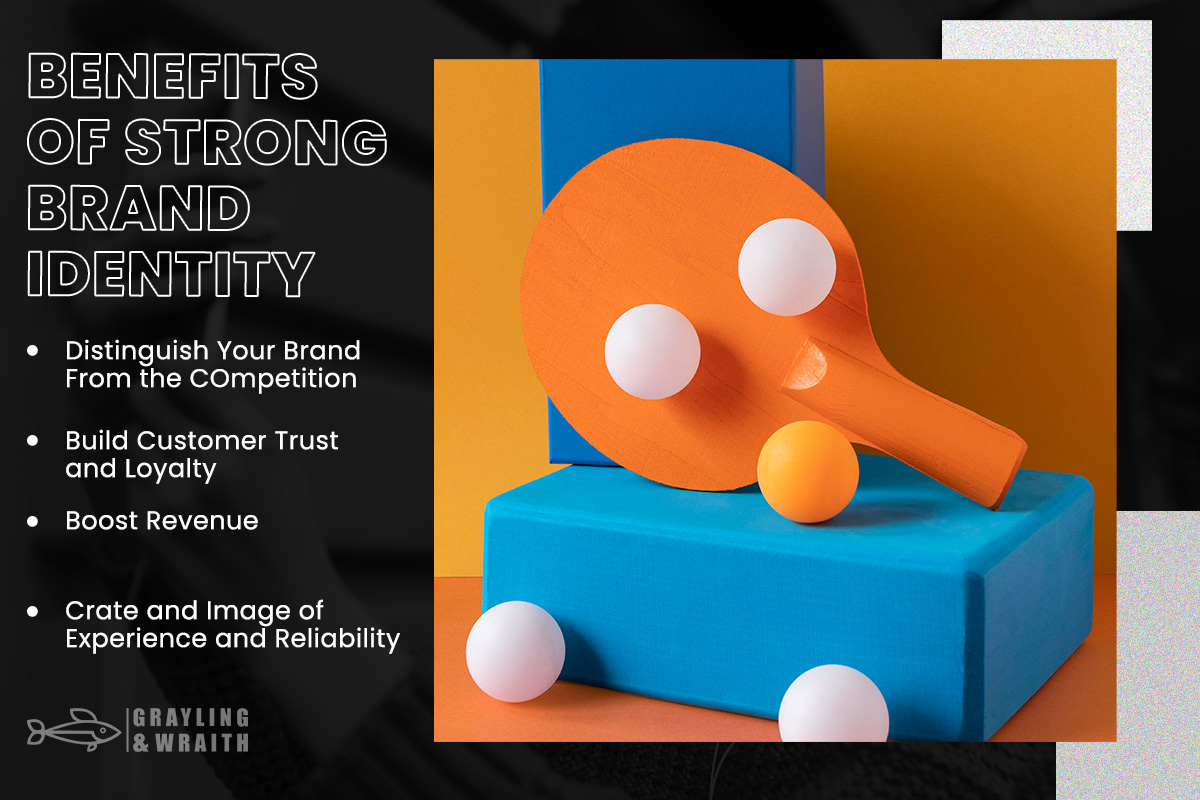
You may say that small businesses like yours don’t need a brand identity, unlike big companies. However, there are proven benefits linked to a good brand identity that all businesses can benefit from:
Distinguish Your Brand From the Competition
Your brand identity can play an important role in helping you stand out in a crowded marketplace. As soon as someone sees your logo and color palette, they should immediately connect them to your brand. That is the power of brand identity. Creating consistent, coherent brand visuals helps in brand recognition and awareness. Don’t be conscious about people getting sick of seeing your brand all over the place as the more people are exposed to your brand identity, the more they recognize and trust your brand.
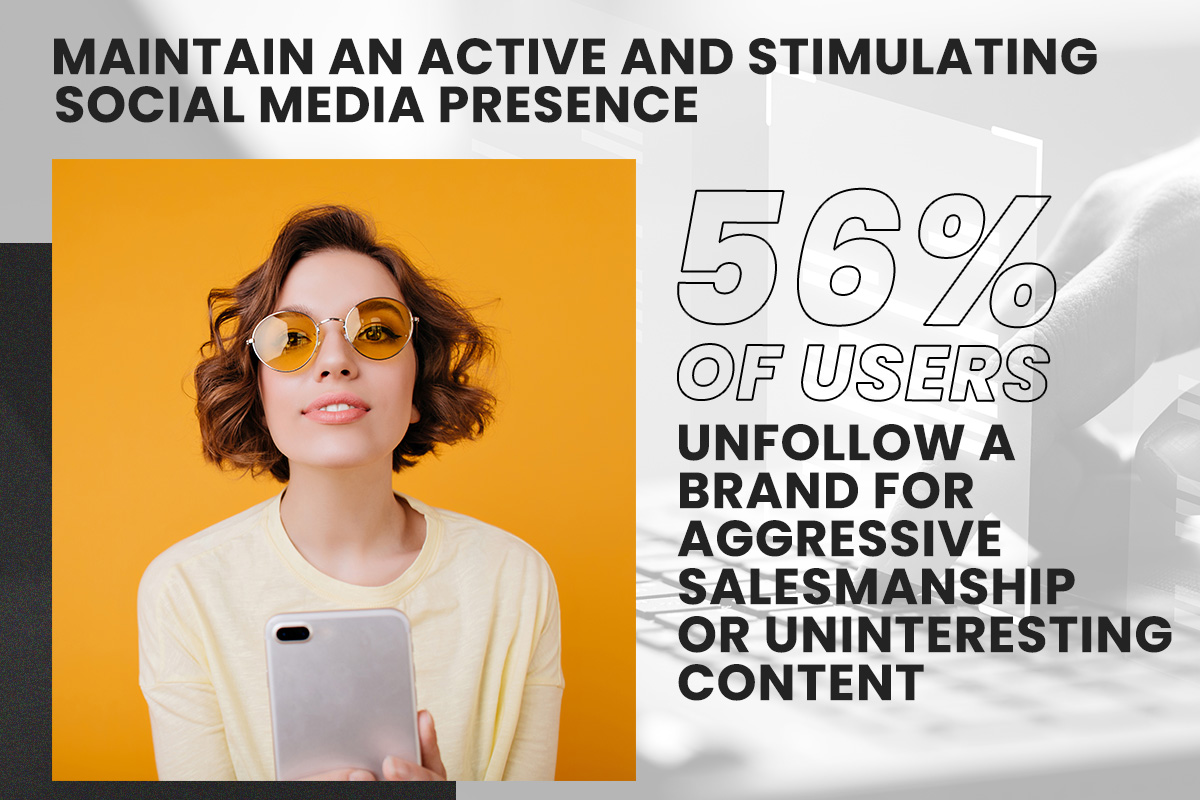
Build Customer Trust and Loyalty
Consumers buy from brands they trust. In a survey conducted, 81% of consumers shared that they need to trust the brand before buying from them. An effective brand identity can help foster loyalty and trust since it elicits an emotional response from your customer. If your customers feel that they share the same values with your brand, they are more likely to choose you over the competition. More so, the more effectively you communicate with your audience, the more they are likely to engage with you and ultimately build lasting relationships with them. When brands build trust, consumers reward them through loyalty and referrals.
Create an Image of Experience and Reliability
A solid brand identity positions your business as an authority in your industry. People perceive a branded business as more experienced and reliable compared to an unbranded enterprise.
Boost Revenue
Consumers reward brands they feel connected to through purchases, loyalty, and referrals, which ultimately boost your revenue. Consequently, a strong brand identity leads to improved recognition and awareness. On the other hand, if your brand identity is unmemorable, your revenue will likely suffer. As a result, your brand may not be top of mind for customer recommendations if you have a weak brand identity. Moreover, people like to be connected with “good” brands that reflect their values. Therefore, customers are more likely to recommend you to their peers if they have a positive feeling about your brand identity.
Some brands have their brand identity as they are unaware of the impact of brand identity. Others struggle to create a strong identity as they don’t know how to communicate their brand effectively.
What is Brand Personality?
A brand personality helps customers connect to brands that reflect their values. It humanizes the brand and makes it relatable. It is the characteristics you’d describe a brand if it were a human. A brand personality indicates if your brand is fun, serious, adventurous, or trustworthy.

Core Components of Brand Identity
When creating a brand identity, you are building visual elements that help communicate your brand story effectively. Depending on your brand’s needs, your brand identity can be extensive or simple. A memorable and recognizable brand requires consistency. Regardless of your brand’s needs, a brand identity requires these components:
- Logo
- Color Palette
- Typography
If you wish to produce a wider range of content, your brand identity may also include these additional elements:
- Graphics and illustration
- Photography
- Iconography
- Data visualization
While these elements can be overwhelming, you don’t have to create all of these elements all at once. You can build your visual elements by starting with the fundamentals—logo, color palette, and typography.

Elements of Brand Identity
Brand identity is more than your logo. It provides an emotional, visual, historical, and human experience that differentiates your brand from the competition. Here are the fundamental elements of a brand identity:
Logo
The logo refers to a graphical symbol that summarizes a brand’s name or purpose. It is a primary element of brand identity as most people pay attention to it. Additionally, logos nowadays are moving towards cleaner and simpler designs for easy recognition and retention.
Typography
Once you are done with your logo, it is time to move on with your fonts. Make sure your fonts are flexible, adaptable, and can be used across different platforms. Furthermore, your fonts should also complement your color palette.
Color Palette
The color palette should be simple and flexible. Use color psychology as your guide in selecting the right color palette for your brand identity. Ask yourself what kind of emotions you want to elicit from your audience. Red and yellow express energy and passion whereas blue exude calmness and serenity. Darker blue invokes trust, which is why most banks use this color in their palette.

Logo vs. Branding: Is there a difference?
It is a common misconception that logos and branding are all the same. Sometimes, these two terms are used interchangeably. However, while they are closely related and must work cohesively, logo and branding are different. A logo is a graphical representation of a brand whereas a brand summarizes organizational values,
personality, and other tangible and intangible elements. A logo would be pointless without a brand. Hence, a logo is part of a brand and a well-designed logo helps companies reach their audience effectively.
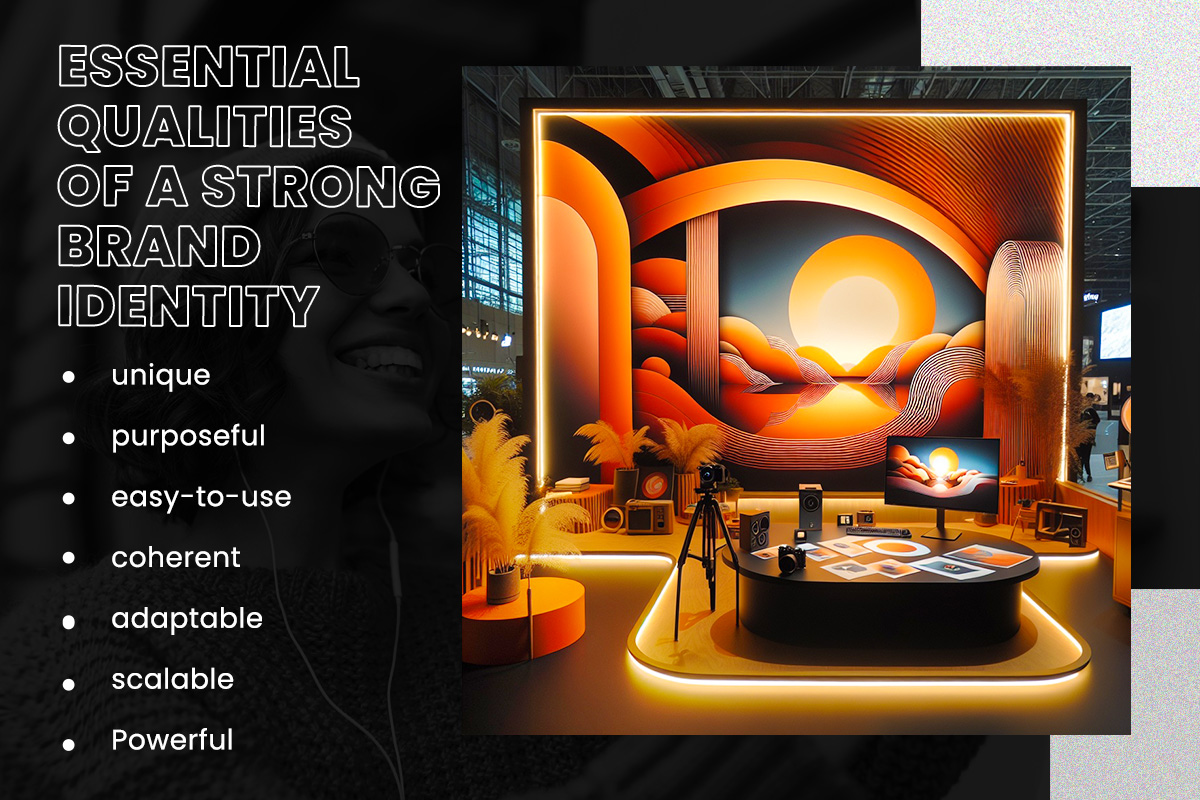
Qualities of a Strong Brand Identity
It is your job to create a strong brand identity to tell your audience how to perceive you. When they see your logo or hear your brand, it brings a mental image of the type of company you have. Your brand identity needs to be flexible, scalable, and functional internally (creative team) and externally (customers). These elements will help you build a winning brand identity:
Purposeful
Your brand doesn’t have to be everything for everyone; you just need to be someone for your target audience. Furthermore, a strong brand knows its purpose and mission and spends its resources working towards its goals and solving the specific issues the brand is designed to address.
Unique
Good brand identity catches people’s attention and stands out from the crowd.
Coherent
Your brand identity should deliver a consistent, logical, and pleasing customer experience that satisfies the brand promise. Part of this cohesion is ensuring there is consistency in design across all marketing platforms. More so, it also means being able to fulfill customers’ current and future needs and expectations.
Adaptable
An effective brand identity should be used in different platforms and applications.
Impactful
It should be remarkable and create a visual impact. Your brand identity should be memorable so that customers can immediately connect it to your company.
Scalable
Your brand identity should be able to adapt to growth.
Easy to use
Your creative team shouldn’t have any trouble utilizing each visual element in your marketing materials and other channels.

How to Create Your Brand Identity
Building a brand identity is a multifaceted process that doesn’t happen overnight. You cannot just decide on a few colors and decide on a logo and call it a day. Your brand identity is powerful and creates a lasting impact on your target audience. Hence, you must approach it strategically to build a solid brand identity that truly resonates with your brand – and can sustain you as you expand.
Strong brand identity requires an intimate understanding of your company, what you can offer, and how you want to be perceived by your audience. You also need a strong team of designers and communicators to translate your creative visions into striking visuals. Building a brand identity isn’t a walk in the park but it is crucial for your brand. If you want your business to become a well-recognized brand name, you must put in the work.
These steps will help you create a strong brand identity. These steps are intuitive and straightforward although the implementation is another story.
Step 1: Understand Your Personality
Your brand is reflected in what you do and how you interact with your employees and customers. It is an important investment for a business; yet, many businesses fall into the trap of neglecting their branding. Understanding your brand and knowing your visions can position you as an authority in your industry, set your company apart from the crowd, support your business strategy, retain customers, and encourage referrals.
Moreover, the visual aspect of your brand identity comes after you know your brand intimately. You need to understand your brand personality, your values, what you can offer, and how you communicate. Consequently, your visual identity will communicate these core brand elements. If you don’t have these details, there will be a disconnect between your visual elements and your brand.
The key elements of a successful brand include:

Brand Attributes (benefits or values) – These refer to your brand characteristics or features that highlight the physical and personality part of your brand. They are created through images, actions, or assumptions. A strong brand must be relevant, consistent, sustainable, credible, inspirational, attractive, and unique. It also needs to have proper positioning.
Relevant – It must meet your target audience’s expectations and should serve the way they want it to. You need to persuade your customers to purchase your product or avail of your service.
Consistent – A consistent brand summarizes what the brand represents and builds customers’ trust. It shouldn’t deviate from your core brand proposition.
Sustainable – It should drive your company towards innovation, excellence, and success.
Proper positioning – A strong brand should make your business competitive and should be positioned so that your target audience prefers your brand over your competition.
Credible – You must do what you promise and communicate it realistically. A strong brand shouldn’t fail to deliver its promise.
Unique – Your brand should be remarkable and easily recognizable. It should stand out from the competition.
Attractive – A strong brand should be appealing and speak to your customers. Your target audience should be persuaded by your brand promise and value.
You can conduct a brand survey and ask some customers about brand attributes. This will give you insights into your brand characteristics. Internally, you can ask your team to write the words that your target audience would describe your current brand. After that, jot down the attributes you want your audience to stay about your brand in the future. This gives clarity on the brand perceptions you need to eliminate and the attributes you aim for so you can customize your strategy based on these attributes. Your brand attributes will guide you to your brand vision.
Brand Essence
Brand essence is the soul of your company. It brings together values, mission, and vision statements. Additionally, this encompasses your brand voice, tone, and personality. Knowing your brand personality allows you to articulate the tone of your communications, design, and marketing. For instance, are you humorous and cheeky, traditional and professional, or cool and laid back?
A great way to understand your brand personality is to ask if your business were an animal, what type would it be, and why. This approach will give you a fresh and excellent perspective on your brand personality.
Brand Heart
Brands have a set of beliefs that influence what they do. Your brand’s core principle is your brand heart. Core principles include purpose, vision, mission, and values. As these core principles are the driving force of your business, knowing what these are and why they are important is essential. Purpose and vision are your why. Specifically, vision is all about the future that you want to
help create. Mission and values are your what. A brand mission is action-oriented that communicates your brand’s purpose and how it plans to serve your audience. Meanwhile, brand values are a set of guiding principles that dictate your brand message, personality, and identity.
Brand Messaging
It refers to your tone of voice, messaging pillars, and value proposition that you establish when you communicate with your audience. Structuring your brand messaging allows you to convey your core values. Get your tagline, value proposition, and line of communications right to ensure your visual identity channels the right brand story.
Step 2: Evaluate Your Existing Identity
Assessing your current branding is a great way to figure out which parts of your strategies work and which ones don’t. Branding audit uncovers bottlenecks that are keeping your brand from propelling forward. It identifies your strengths and weaknesses as a brand.
What is a Brand Audit?
A brand audit is a comprehensive way of reviewing your business. It examines all the areas in which you interact with the world. It is an analytical strategy that evaluates your target market, ideal customers, overall strategy and goals, visual messaging and storytelling, customer experience and success, and brand awareness and brand positioning. Before you can prepare any effective marketing strategy, you must understand where your brand is currently and how your brand positioning is seen by your internal and external customers and the market.
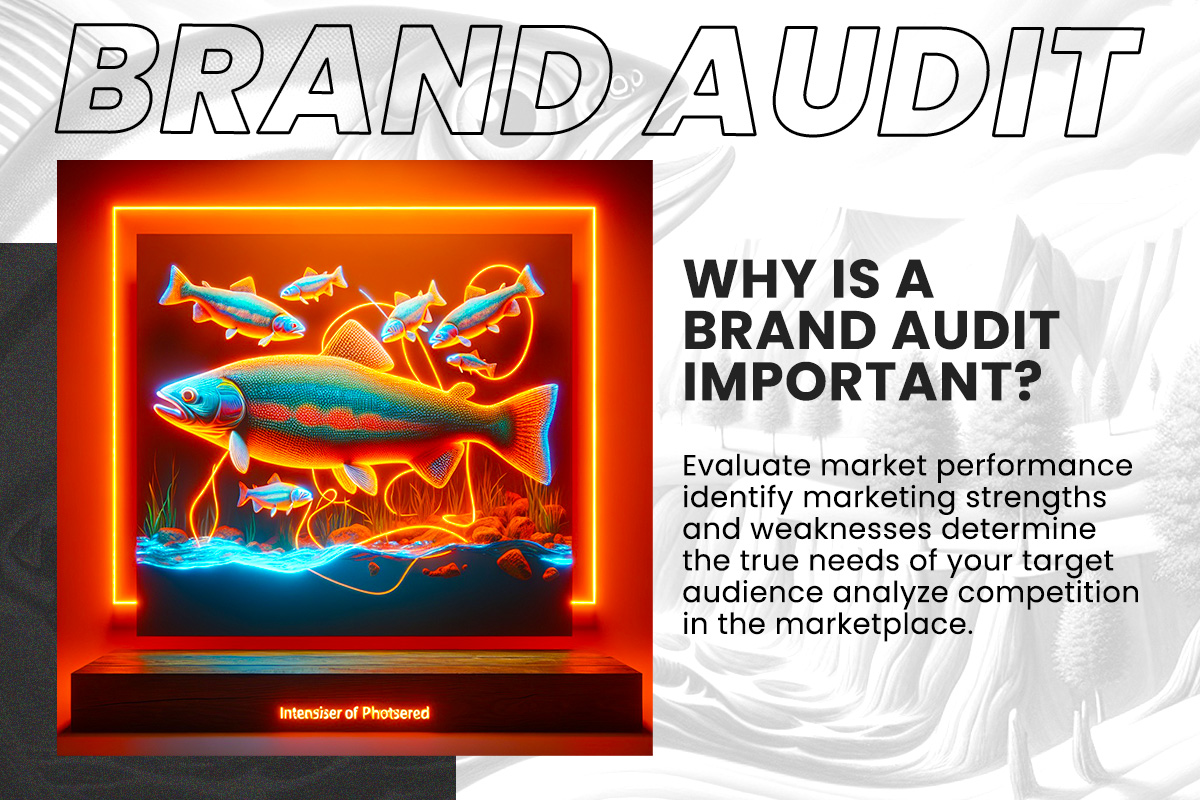
Why is Brand Audit Important?
Brand audits help you deeply understand your company identity, culture, customer perceptions, loyalties, and message consistency. They provide insights into your competitive position and reveal new, innovative ways to connect with customers. Here are ways your business can benefit from a brand audit:
- Measure Market Performance
You will gain insights into how your brand is viewed within the industry through a brand audit. It is a holistic analysis of your business’s internal branding (voice, values, company culture, and positioning), external branding (SEO, logo, email marketing, social media presence, websites, etc.), and customer experience (customer support and service policies).
- Spot Marketing Strengths and Weaknesses
A brand audit identifies your brand’s strengths, weaknesses, and growth opportunities. Furthermore, it provides insights into market performance, helping you understand why your strategies may not be working if profits are plummeting or sales are low. Additionally, for rebranding or refreshing your business, a brand audit reveals which marketing materials are effective and which need improvement. The insights gained help you align your new strategy and prioritize actions accordingly.
- Determine the True Needs of Your Target Audience
The key is to speak directly with your valued customers and partners to understand their perceptions and experiences with your brand, measuring what they enjoy and dislike. This provides a real understanding of your brand’s value. From this, you can decide whether to overhaul, update, or fine-tune your brand. A brand audit also reveals how your target audience associates with your brand in the marketplace.
- Analyze Competition in the Marketplace
How much revenue are you losing to your competitors with poor branding? If your target audience is confused with your inconsistent messaging while your competitors deliver a strong, consistent, and identifiable brand voice, your customers will likely choose who they believe to be more dependable and credible.

How to Do a Brand Audit
It is not enough that you uncover the bottlenecks and come up with possible solutions. Go through the entire brand audit process to see the full results. As mentioned, a brand audit should cover your internal and external branding and customer experience. Consider these tips when following these brand auditing steps to yield solid results.
Identify Your Brand
Review your marketing plan and evaluate your mission, vision, brand positioning, and unique selling proposition. Are your target customers well-defined? What is your brand promise to them? Ensure that you have a solid understanding of what your brand is before assessing how others perceive your brand.
Check Your External Marketing Collaterals
Are your marketing materials cohesive and consistent with your branding? Refer to your business logo, brochures, sales sheet, business cards, and print advertisements and compare them to your online presence such as your website, email marketing messages, social media, etc. Find out if there is a disconnect to your design, color, and tone of voice. Are your marketing materials serving the intended market?
Evaluate Your Business Website
Use website analytics to assess your web traffic and its sources. Make necessary changes if all your traffic comes from one or two sources since you’re vulnerable to any changes to these sources. Are these traffic sources the right kind of audience? Is your target audience interacting with your content? Engagement is an indicator of your website’s success. However, if you are getting a lot of visitors who leave without interacting with your content, it may be time to make adjustments.
Check your bounce rate and conversion rate. A bounce rate is the percentage of visitors that leave your website after viewing a page on your site while the conversion rate is the number of conversions divided by your total number of visitors. If your bounce rate is higher than 80%, you need to work with your retention strategy. On the other hand, if it is between 70% to 80%, your website performs poorly and you should update it as soon as possible.
Assess Your Social Media Presence
Refer to your social media analytics to gauge how your social media marketing is performing. Track all your social media accounts to ensure you are using the right channels for your brand. Additionally, assess whether your social media accounts reflect your brand accurately and if the posts and content are aligned with your brand identity.
You will need to check each social account and compare each element against your brand style sheet to ensure your images, hashtags, and brand voice are coherent and consistent with your brand identity. Furthermore, check the types of customers that engage with your brand. Are they the right audience?
Find the posts that have great impressions and engagements so you can leverage these types of content in the future. Do you tend to get more interactions when you post videos? How about photos? Moreover, do people respond similarly to posts on your Instagram as they do on your Facebook page?
Change: Social” to “Social Media Presence”

Ask for Customer Feedback
Your employees are your internal customers who provide the customer experience for your brand. Therefore, they cannot properly translate your brand story if they do not have a clear understanding of your brand. Consequently, ask them to describe your brand, brand vision, and brand promise.
Additionally, your customers can provide you with great insights into how your brand is performing. To gather these insights, conduct a survey using a combination of email surveys, social media polls, customer focus groups, and online surveys. This approach will help you understand customer opinions on things like:
- The words they would use to describe your brand
- The problems that your brand has solved
- The feelings that your brand invokes
- If they would refer your brand to friends and family
- The quality of your customer service
- The ways you can improve your service to them
Besides these, you also need to survey target markets that aren’t your customers. Doing this will help measure your brand awareness. You can ask the following questions:
- Do you know our brand?
- Have you ever used our brand?
- How would you describe our brand to others?
- Has our brand solved any problem for you? What problem have we solved?
- How does our brand make you feel?
Conduct Competitor Analysis
Check your biggest competitors’ overall branding from their websites, and social media presence to their marketing and advertising collaterals. You can also ask for insights from your customers and employee surveys.
Track Your Results and Progress
Use the insights you’ve gathered to figure out which part of your branding strategies you need to stop, overhaul, and fine-tune. Come up with an action plan to update your brand to sync with your business’s mission and vision. Track your progress.
Doing brand audits regularly allows you to stay current and consistent with your brand as your business expands and evolves.
Step 3: Benchmark Your Competition
Knowing who your competitors are is half the battle. You need to understand their strategies, and how they implement them, and then find ways to get ahead of them. When your customers encounter your brand and your competitors, you need them to choose your brand. However, how can you achieve this goal if you don’t know how your competitors are performing?
Importance of Checking the Competition
Brands aim to get market share as it translates to a competitive advantage. More market share also means improving your bargaining power. Conducting a competitor analysis gives you the chance to get a bigger market share. Analyzing your competitors not only helps you understand their weaknesses, but also provides you the opportunity to adapt their strategies, refine them, and implement them to your current techniques.
How to do a brand competitive analysis
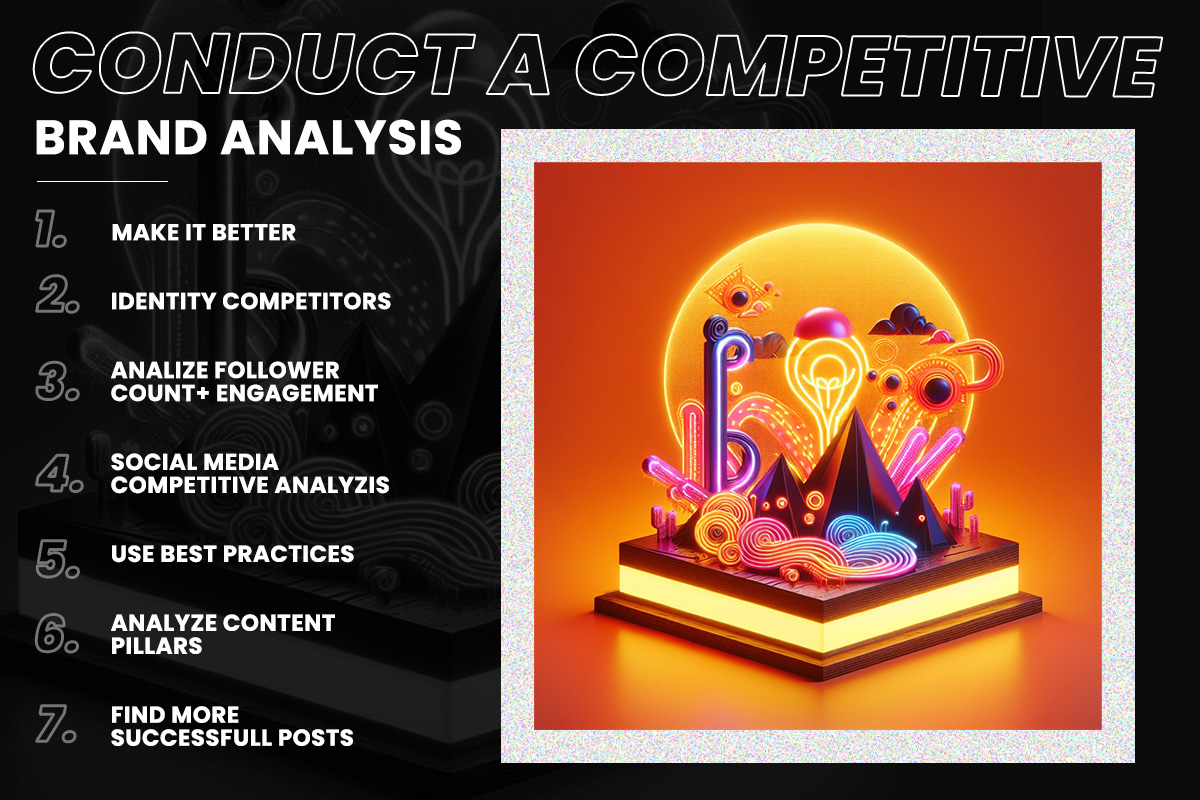
Can you remember the last time you analyzed your competition? And if you did, is your competitive analysis effective?
These steps will help you conduct a thorough competitive analysis:
Determine Your Competitors
You need to know who you are benchmarking against for an accurate comparison of data. Categorize your competitors into direct and indirect. Direct competitors are businesses that offer the same products and services in the same area as yours. Indirect competition is those that offer products different from yours but could solve the same problem that your brand is solving. Others only stop at a direct competition. However, indirect competitors prove to be valuable. Keep an eye on these indirect competitors as they could switch positions at any time and may become your direct competition. Hence, you should analyze competition regularly as the market shifts over time.
Identify What They Offer
Check the complete product line and/or services they offer as well as their quality. Take note of the prices, discounts, and promotions they’re offering customers.
Review Their Customer Journey Process
It can be a bit tricky to run a sales analysis of your competitors. You need to know their sales process, the channels they use, store locations, partner reselling programs, revenues, total sales volume, and discount programs. Take time to check their pricing strategy. Is your brand offering similar or comparable pricing? Do you offer a cheaper alternative? Knowing these pieces of information gives you insight into the competitiveness of their sales process and the data you need to prepare your team to compete during the final purchase stage.
Evaluate how they market their products and/or services
The fastest way you can use to measure their marketing efforts is to check their website. Take note of their content including blogs, e-books, podcasts, visual content such as infographics and videos, FAQ sections, press releases, and media kit.
Assess their content strategy
Do your competitions publish plenty of blog posts regularly? How about their newsletters? How often do they publish their blogs or release an e-book? These pieces of information allow you to leverage their lead-generating strategies. The next step is to check the quality of their content as quality trumps quantity. Their target audience won’t find much value in their content. Gather a handful of samples you can review rather than checking each piece of content.
Your sample content should have different content pieces including blogs, e-books, newsletters, featured articles, Press releases, etc. Consider the accuracy, grammar, and spelling errors, tone, readability, and author when checking their content. Also, consider how thorough the content is written. Pay attention to their photos and imagery and check whether their visual content is custom. When you understand how your competitors market their products, the next step is to figure out whether these strategies are working for them.
Consider how their customers engage in their content
How does their target audience respond to their content? To find these answers, examine their comment sections, the number of shares, and likes. Additionally, check which topics resonate better with their audience, the type of comments they receive, and the specific topics people discuss about their brand. Furthermore, consider checking which channels have the most interaction.
Pay attention to how they market their content
Check what kind of keywords and the keyword density are in their copy. Are they using Image ALT text tags and internal linking? Check what type of content gets the most shared and backlinks. Find out the types of backlinks of your competitors and who else is sharing your competitors’ content.
Determine the Tools They Use
Knowing the tools and technology of your competitors provides you an opportunity to outperform their processes. Consider looking at your competitors’ job listings, particularly the tools they need the applicants to know.
Review Competitor’s Social Media Presence and Strategies
Understanding their social media presence and engagement rates is the last area you need to evaluate in your competition. First, assess whether your competitor has a strong social media presence. Have they optimized their social sharing on their blog posts and website? Do you see social media buttons on their website? Additionally, do they incorporate social media into their CTA buttons?
If your competitors are on social media platforms that you may not be on, it is worth understanding how they utilize these channels. Check their engagement rates on these platforms to determine if they are worth exploring. Consider the number of likes, followers, posting frequency, and consistency, as well as the number of shares and comments. Furthermore, analyze the type of content they are posting. Are they dedicated to driving traffic to their landing page, or are they focused on brand awareness and community engagement?
Next, determine the balance between curated and original content. How do your competitors respond to comments and interact with their followers? Do they respond frequently? These insights can help you refine your social media strategy.
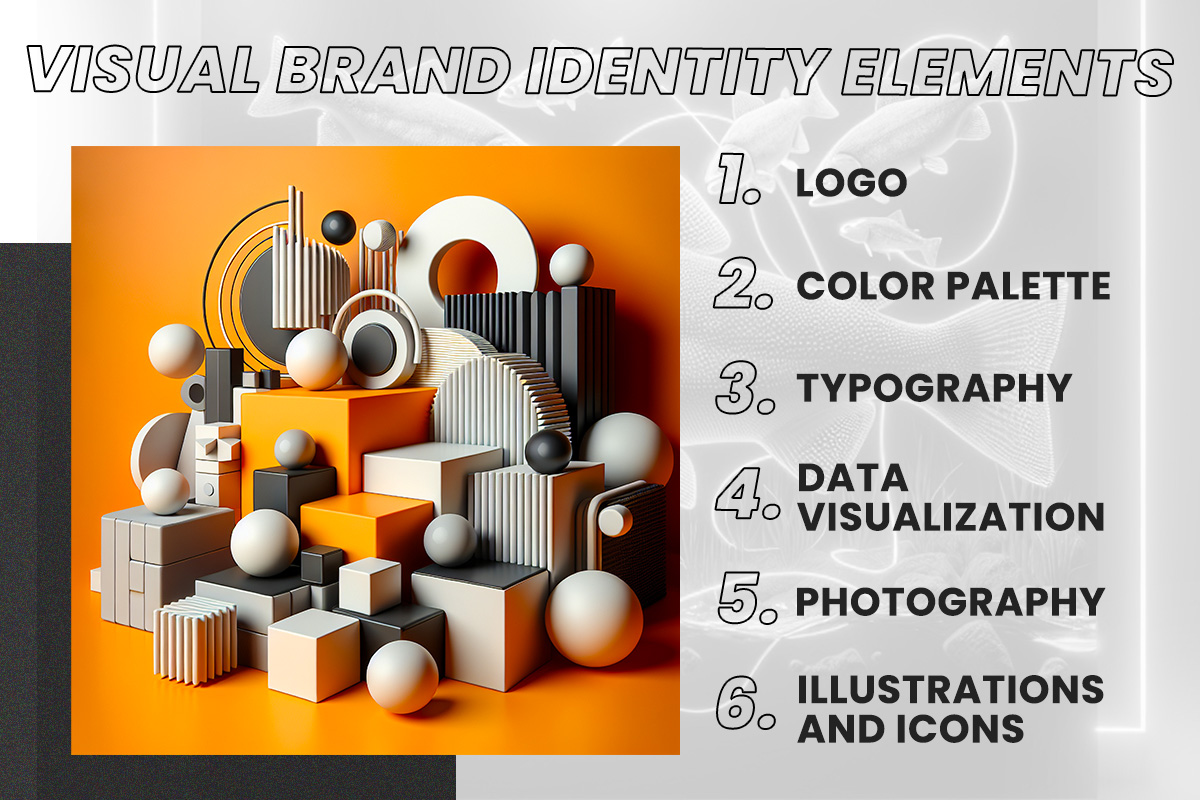
Step 4: Build Your Visuals
Billion-dollar companies pay attention to their visual identity guides to stay ahead of the competition. Visual identity helps them win their customer trust, build a loyal following, and distinguish their brand. Your visual identity leaves a lasting impression and influences the perception of your customers.
Components of a good visual identity
Each visual element works together to produce a unified identity that relays your brand’s visual language. These elements are:
Logo
A logo is a symbol that signifies your brand. This can be a combination of colors, shapes, texts, and sometimes a tagline. Regardless of which type of logo your brand designs, it should help relay your brand identity. Your logo should be able to adapt to various contexts whether you use a wordmark or monogram logo
Color palette
Your choice of brand colors plays a great role in perception and how your target audience may feel about your brand. Colors have a unique way of triggering emotions. Using a signature color can increase brand recognition by 80 percent. Go for a functional, appropriate, and versatile color palette as your brand colors will be used in different contexts. Consider different platforms and content when deciding on your brand colors.
Typography
There isn’t a one-size-fits-all approach when choosing your fonts and texts. Consider the type of mood you want to elicit and your company voice and tone before choosing your typography. Ensure that you choose something readable, adaptable, functional, communicative, and enduring.
Imagery
Ensure your content is consistent visually when choosing images for your assets—websites, social media posts, email marketing, press releases, etc. Pay attention to the style, subjects, and composition of the images and check if they tie up to your overall branding. It can be easy for your customers to relate to themselves through your photos. Use diverse models if you are using people photography. Include images such as headshots, portfolio images, social media photos, and stock photos.
Graphics, illustrations, and icons
Each icon and graphical illustration plays a very specific function in your visual identity. Consider these elements as your brand’s stylistic extensions. Furthermore, your graphics can impact the way you visually represent content on marketing materials, presentations, and social media posts. Additionally, using hand-drawn illustrations can bring a sense of personal touch and individuality to your brand.

How to build a visual identity
Having a strong and well-defined visual identity makes it easier for customers to relate to and depend on your brand. Moreover, the more your customers recognize your brand and acquaint themselves with your products and services, the stronger they connect to your brand. Here’s how to build a coherent visual identity:
Understand your audience
Define a clear demographic you want to target. Create a buyer persona and determine their gender, age group, geographical location, habits, behaviors, and motivation. You can get these details from your social media following and website traffic. Having a deep understanding of your target audience enables you to create a suitable visual language that communicates effectively with your target market. You will develop clear guidelines for your brand’s true audience.
Utilize your brand strategy
When you have a clear brand strategy, you can curate a brand identity that summarizes your purpose, values, and goals. This framework enables you to create a cohesive visual identity that represents your brand.
Be guided by your brand purpose
Your brand purpose will guide every branding decision across all aspects. First, think back on why you started your brand. What purpose do you wish to see it achieve? Defining or redefining your brand purpose and long-term goals can offer helpful insights into the important qualities you’d like your visual language to have.
Next, ask yourself about the services or products you are offering, your short-term and long-term goals, mission, and vision. What are the emotions you wish to evoke from your audience? Fonts, just like colors, bring certain personality traits. For instance, sans-serif fonts give off a modern vibe, which is perfect for tech corporations, while unique hand-written fonts are best for creative businesses.
Scale Your Assets
Before developing a visual identity, know that it covers a range of specific platforms that require different design approaches. Your visual identity will be used on ads, packaging, brochures, digital projects, corporate identity, artwork, websites, social media, etc. You may want to hire different creative designers for different platforms. For instance, website designers are best for your website, design concepts, and layout for digital campaigns. On the other hand, a graphic designer is best suited for creating ads, signage, corporate identity, marketing materials, etc. Ensure that all these designers understand your brand to adapt each asset accordingly and observe the consistency in your visual language. You can achieve this through brand guidelines that define your visual brand standards. Understanding each medium not only produces better design; it also helps you communicate better.
Stay Consistent
Is your visual identity aligned with your voice of tone and communication style across all your distribution channels? No matter where your audience is looking – be it on your website, Instagram, or newsletter – your visual identity should tie in with your communication style. The goal of creating a visual identity is to a strict guidelines for design to help share your intended messaging. Consistency is two-fold in which you should be consistent with your creative team and external customers. Being consistent with your team serves as a guide for your design decisions. On the other hand, when you are consistent with your customers, you cultivate trust and foster loyalty. However, consistency doesn’t mean strict and rigid.
Brands are fluid in they can and should evolve as they gain momentum. Brand consistency focuses on having a strong foundation upon which you can build.
Step 5: Create Your Branding Overview
It may be tempting to have all designers work simultaneously, but it’s important to work with each element individually to ensure everything is coherent and aligns with the brand. If you want to succeed in your visual identity, you need to create a design brief. A design brief outlines the core details and expectations of a design project. It sets the tone and creates a structured road map for your design. Through a creative brief, you ensure everyone is on the same page. Any organization that uses design resources can leverage having designers create a brief before a project.

How to Make a Creative Brief
Through a creative brief, you facilitate better communication among your team. You also anticipate a realistic timeline and budget before the creative project starts. It also enables you to set a quality standard and the types of deliverables required. When creating a brand overview, consider the following:
Summary
List out details about your company from your brand purpose, brand guidelines, and brand promise to your current design needs. This can be especially relevant when plenty of people are working on the same project. Everyone on the team will have an overview on hand they can use as a reference as needed.
Project Overview
Provide a detailed description of the design project being implemented. The description should detail the tasks roles and responsibilities of each team. The project overview provides you an opportunity to clarify the project scope that highlights the deliverables. Each team member should agree on the project scope to avoid confusion or tension throughout the design process.
Project Goals and Objectives
Explain the goals and objectives to the team. These should focus on the design problem and solutions you will apply to fix the issue. Layout the concrete steps for how you will reach the goal in mind.
Project Deliverables
Project deliverables are dependent on the size, scope, and budget of the project. Set clear standards and write out the deliverables to avoid any confusion at the end of the project.
Creating a design brief gives clarity to people working on your visual identity.
Step 6: Make Your Logo
Your logo is the face of your business. It is how your organization is identified and remembered. A logo provides an opportunity to create a statement about your company. While it functions as the face of your business, it isn’t your brand. Your brand is how you are perceived by the world. It is intangible. A logo is part of your brand, particularly, your visual identity.
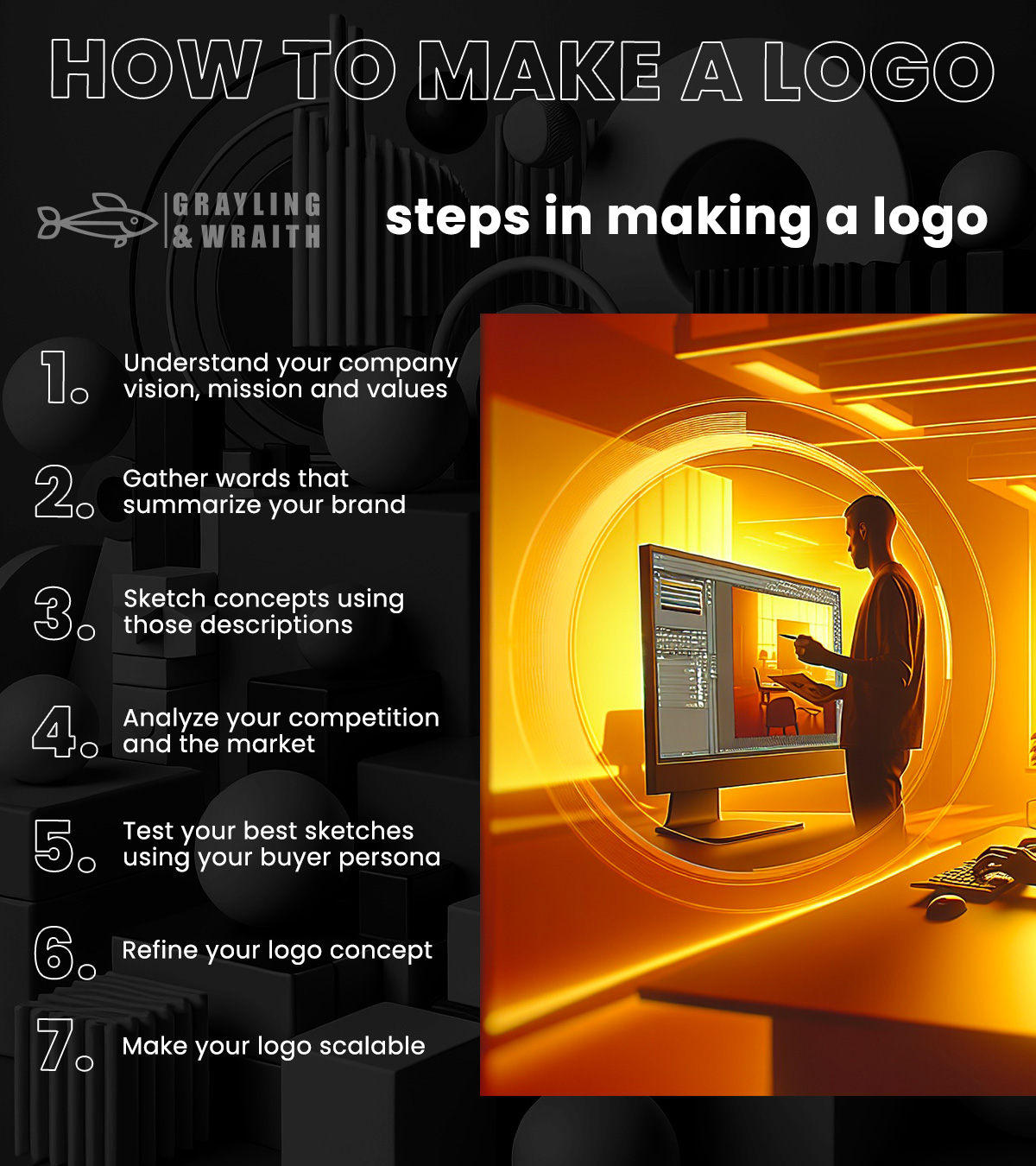
How to Make a Logo
Designing a logo may sound simple and easy in theory but it’s not. It takes a lot of strategies that require deep thinking. At some point, you will need to create something visual. However, the big part of making a logo is strategizing more than the actual drawing. Note that you aren’t just designing a logo. A logo is just a part of your visual language, you must ensure it harmonizes with other elements.
To create the right logo for your brand, take a cue from these tips:
Understand your company’s vision, mission, and values
This step is the “question” phase where you exhaust as much context and background as possible to align with your values, brand attributes, and brand promise. The goal is to have an intimate understanding of your company, beliefs, and goals. Additionally, bear in mind that you aren’t just designing a logo; you are forming your brand identity.
Therefore, ask yourself the purpose of your logo. What do you want people to feel when they see your logo? Furthermore, what are the values you want your brand to convey? Finally, can you define the unique characteristics of your brand’s personality?
Once you come up with your why, you’ll need to document your answers in a creative strategy. This strategy provides a general overview of your organization. You can include your design process, brand tone, visual factors, and the first draft of your design and logo. Assess your deliverables based on their capacity to meet the goal established in your creative strategy. These deliverables will keep you objective when personal preferences and opinions take place.
Gather Words That Summarize Your Brand
Write down words that you think describe your brand the most. Use synonyms to find more suitable words that describe your ’why’. Each word will guide you to refining an idea.
Sketch Concepts Using Those Descriptions
Start by googling ideas based on your why and your descriptions. Consider style, color, and typography. Don’t get frustrated if the first few concepts don’t hit right; instead, let them evolve on their own. Additionally, specific color theory can help with your logo design, as different colors elicit different behaviors and emotions. Using the right color will help you evoke the desired emotional reaction from your target audience.
Next, figure out what color triggers your target market. When choosing colors, don’t use more than three to avoid confusion. Furthermore, ensure your colors are versatile for all possible media and distribution platforms.
Analyze Your Competition and the Market
Now that you’ve covered the basics, it’s time to check your competition and your niche. Observe the entire visual system by observing brands across different platforms such as websites, social media channels, printed materials, etc. Write down the components that speak to you. Include the bad elements that you need to avoid.
Test Your Best Sketches Using Your Buyer Persona
Pick the best three logo concepts and test them based on your buyer persona. Pick the drafts that strike your eyes and show them to others. Ask people you trust what they think of the logo to get varied opinions. If possible, ask an epitome of your buyer persona or your ideal customer profile what they think of the logo. Take note of their feedback as this will guide you when refining the final concept.
Refine Your Logo Concept
Now that you’ve chosen which logo to use, it’s time to refine it based on the descriptions you’ve written down in the earlier stages of logo development. Ask yourself if your logo captures the descriptions. Besides these descriptions, consider the feedback you’ve gathered as well. Use them to refine your sketch further.
Once you are done, it’s time to bring your sketches to usable digital format. Many free digital platforms can help you recreate your drawing digitally. If you chose a symbol or shape type logo instead of text, consider how your company will be written. Can your company name still create an impact and evoke the emotions you wish to create if it’s just written in the text without the symbol?
Make Your Logo Scalable
A logo is considered the face of your company. It represents your company across different platforms -from printed materials, and websites to social media. You want a logo that can appear well on a billboard but can also look great on a notepad. Ensure each part of your logo is legible no matter its size.
Step 7: Decide on Your Brand Color Palette for Brand Identity
Colors set the mood of your visual identity and create mental associations with your brand. Humans immediately respond emotionally when we identify a color. This response prompts a myriad of memories, thoughts, and associations to events, people, and places. As human brains are designed to respond to color, you must be thoughtful in selecting your brand colors.
Your brand palette isn’t just for aesthetics. It is the foundation of your visual identity in all its expressions and implementation. Color is the very first perception of the customers of your brand. It can increase brand recognition by up to 80%. This is why a lot of brands are using blue as part of their color palette as it signifies credibility and reliability.
On the other hand, McDonald’s primary colors are meant to trigger hunger, and increase appetite, and happiness. Red stimulates and excites and can inspire appetite whereas yellow symbolizes happiness and playfulness.
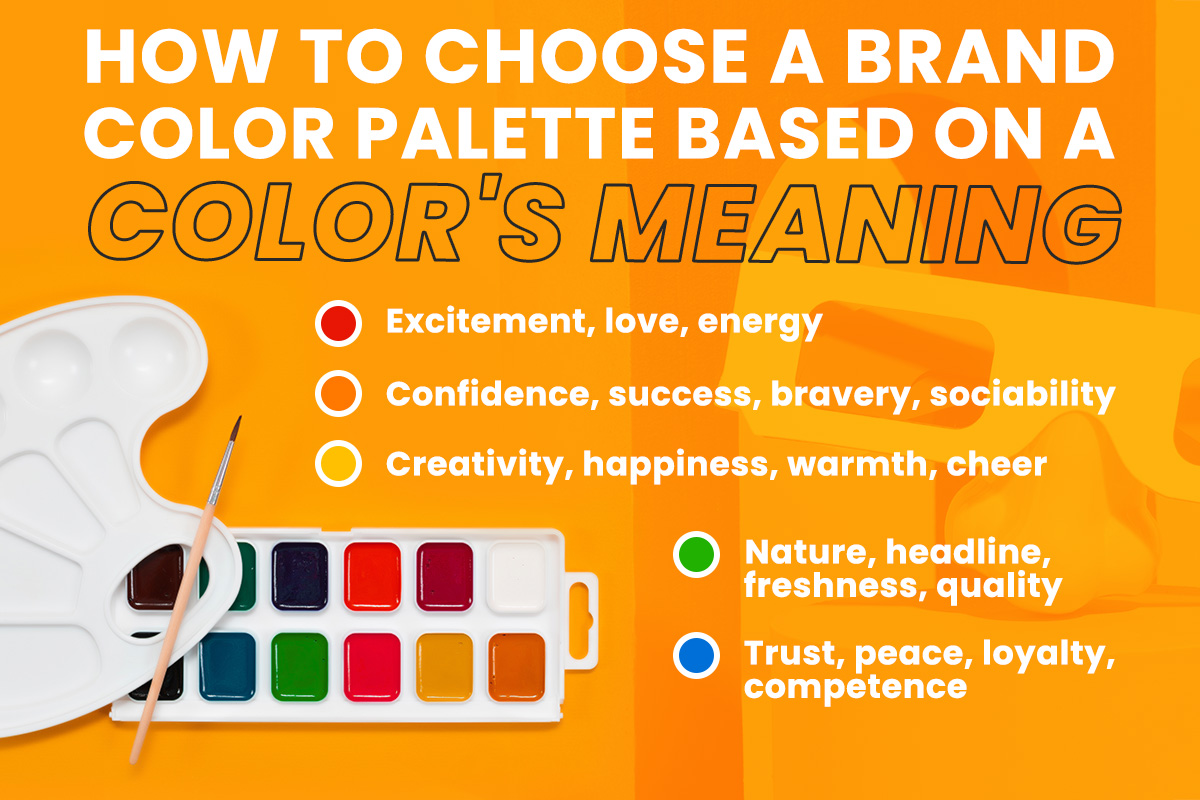
How to Choose a Brand Color Palette
Research reveals that over 90% of people consider visual factors as most important when buying a product. They focus on colors alone when forming an initial judgment of a product. Choosing the right brand colors enables greater awareness and recognition as well as sets your brand among its alternatives. When choosing your brand colors, consider the following:
Understand the Color Psychology
Color psychology is worth looking into to understand the common meanings behind color. However, remember that colors don’t accurately and exactly evoke specific emotions as there is no equation to define perfectly the definition of each color. This is why the color combination is important as it helps achieve the emotions you want to create. Imagine combining blue with red and light blue and pink. Each of these combinations appeals to different emotions.
While color isn’t an exact science, there are popular brand colors that specific industries gravitate towards. Health and wellness organizations go for blue for cleanliness, reliability, and trustworthiness, and green for nature and wholesomeness. Others go for orange to signify energy and life. Food businesses choose warm colors to attract attention and trigger appetite. Colors include red, yellow, and orange. Blue and pink are also used for desserts and sweets. Tech companies pick blue for reliability, innovation, and intelligence.

Determine Your Brand Essence
Knowing what your brand is about gives you a clear idea of the kind of emotions you want your customers to associate with your brand. For instance, do you want them to feel confident, curious, or cozy? Additionally, what is your brand personality? Are you serious, professional, altruistic, or humorous?
The way you want your customers to perceive you can help trim down your choices. By defining these aspects, you can make more informed decisions about your brand’s visual and emotional appeal.
Look for Inspiration
You don’t want to copy your competition’s colors. Hence, it is important to check their brand colors and understand why it works for them. Find out how you can distinguish yourself in the sea of competition.
Pick Your Colors
Think of Coca-Cola’s Red color or Tiffany’s blue. Your primary brand color is the most associated with your brand. When choosing your main color, go for a single color that best summarizes your company. Explore different shades and tints to get the most appropriate color. Once you have your primary color, choose two colors that will flatter your core color. These colors can be close variants of your core colors such that if your primary color is red, you can opt for warm colors for its secondary colors. Monochromatic colors from your primary color are also a great idea for your secondary colors. An example of a brand that uses monochromatic colors is Paypal with its different shades of blue. You can also create a statement by going for colors that contrast your primary color. These colors can highlight your brand colors and give an edgy and modern vibe.
Test Your Brand Colors
Test the colors you’ve chosen using several combinations to ensure they deliver the message and evoke the emotions you want. Use these colors on different platforms i.e. website, social media, email marketing, etc to ensure your chosen brand colors are versatile.

Step 8: Choose Your Fonts and Texts for Brand Identity
Fonts and texts relay the values and tone of your brand similar to what colors do. Moreover, fonts and texts are fundamental aspects of typography, which is the technique of arranging type to make printed language legible, readable, and appealing. Furthermore, typography is a large part of your visual identity that affects how your audience sees and recognizes your brand.
Additionally, good brand typography should be legible, remarkable, memorable, versatile, and capable of communicating your brand personality. Consider brand fonts and texts as an extension of your personality across different platforms. By carefully selecting and using fonts, you can ensure a consistent and compelling visual identity that resonates with your audience.
Here are key factors when choosing fonts and texts for your brand:
Let Your Brand Personality Shine
Brand personality is the foundation of brand identity. It summarizes the traits that your customers associate with you. Just like brand colors, your brand fonts and typography should reflect your brand personality. For instance, is your brand leaning towards athletic and outdoorsy? Alternatively, how about elegant, modern, and charming? Furthermore, do you want your customers to associate you with success and leadership?
Once you’ve established these traits, you are ready to select your typography that will complement your brand. By aligning your fonts and typography with your brand personality, you can create a cohesive and appealing visual identity.

Understand the Anatomy of Typography
Learn how each letterform, shape, or style can create particular feelings. Typefaces have unique traits and learning them can guide you in choosing the appropriate font for your brand. These are a few of the popular fonts and their traits:
Serif: Best for brands that relay a sense of class and respectability. This font gives off a traditional, reliable, and classical vibe. Times New Roman, Palatino, and Garamond belong to this font.
Sans-serif: This modern, minimal, and clean font is great for organizations that want to establish a sense of modern straightforwardness and cleanliness. Examples include Helvetica, Verdana, and Droid Sans.
Scripts: Allura, Pacifico, and Windsong are among the Scripts fonts perfect for brands that want to emphasize their special purpose. This font is unique and remarkable.
Handwritten: If you want to present yourself as playful and approachable, this is your font. Part of Handwritten fonts is Balqis, Salima, and Porcelain Sans Serif.
Ensure That Your Font is Versatile
Each font category has its variations. You must ensure that when you pair fonts, they are still legible and remarkable. The font you choose must be versatile enough to adapt to different platforms. Think of how your content might look if it’s blown up on billboards or scaled down on key chains or company mugs.
Establish a Font Hierarchy
Your font treatment should be a part of your brand style guide. It will help provide clarity and better communication. Each typeface plays different roles including website copy, CTAs, press releases, packaging, etc. When choosing typefaces, pick:
a) the default type that will be used to convey your brand identity, values, and personality.
b) a typeface that supports the primary font
c) a font for your brand accents.
Step 9: Make Your Elements Scalable
Design trends are great guides but don’t get too distracted by them. You don’t need a trendy brand identity that loses its power once the trends wear out. Focus on building an identity that is timeless, unique, flexible, and scalable. Although brand consistency is emphasized for brands, you don’t need to restrict yourself creatively. Create a flexible system for endless design opportunities. Doing so enables you to optimize your logo and other design elements while keeping consistent and staying true to your branding. When building a branding identity, think of where your brand is heading.

Step 10: Establish Your Brand Guidelines
Brand guidelines keep everything and everyone in check and accountable. They provide specifications on everything brand-related, including brand colors, typography, and media assets. Additionally, brand guidelines inform everyone involved how you want your brand to be presented to the world.
The best brands are easily recognizable due to their repetitive and consistent logo, fonts, colors, and imagery. Here are a few of the components you need to include in your brand guidelines:
- Mission Statement: Providing your brand mission statement reminds everyone that all your content is dedicated to achieving your mission. It can guide your ads, web copy, blog, visual assets, etc.
- Buyer Persona: A buyer persona represents your ideal customers. Details of a buyer persona include customers’ age, gender, job title, and problems you wish to solve. This will specify for whom your brand produces media and content.
- Brand Color Palette: Your brand colors will influence your logo, web design, social media, printed ads, and marketing collateral. Define your brand color palette in your style guide and be specific about it. include hex codes, CMYK colors, and RGB values to stay consistent across multiple platforms.
- Editorial Style Guide: This element guides your blogs, video scripts, web copy, social media caption, email marketing, press releases, etc. An editorial style guide provides standards to ensure all your content is on-brand. When crafting an editorial style guide, you need to include grammar, spelling, voice and tone, links, resources, attribution, and media assets.
- Typography: Typography supports your blog design including your web copy and links.
- Data Visualization: Imagery, icons, photos, and videos are an integral part of your brand identity. If you rely heavily on photographs in your branding, your guidelines should include the level of complexity, color schemes, compositions, and technical specs to make the photos on-brand. For infographics and graphics, specify when and where to use them. Include style preferences and technical aspects as well.
Brand guidelines will serve as a compass and help uphold all the various elements that comprise your brand.
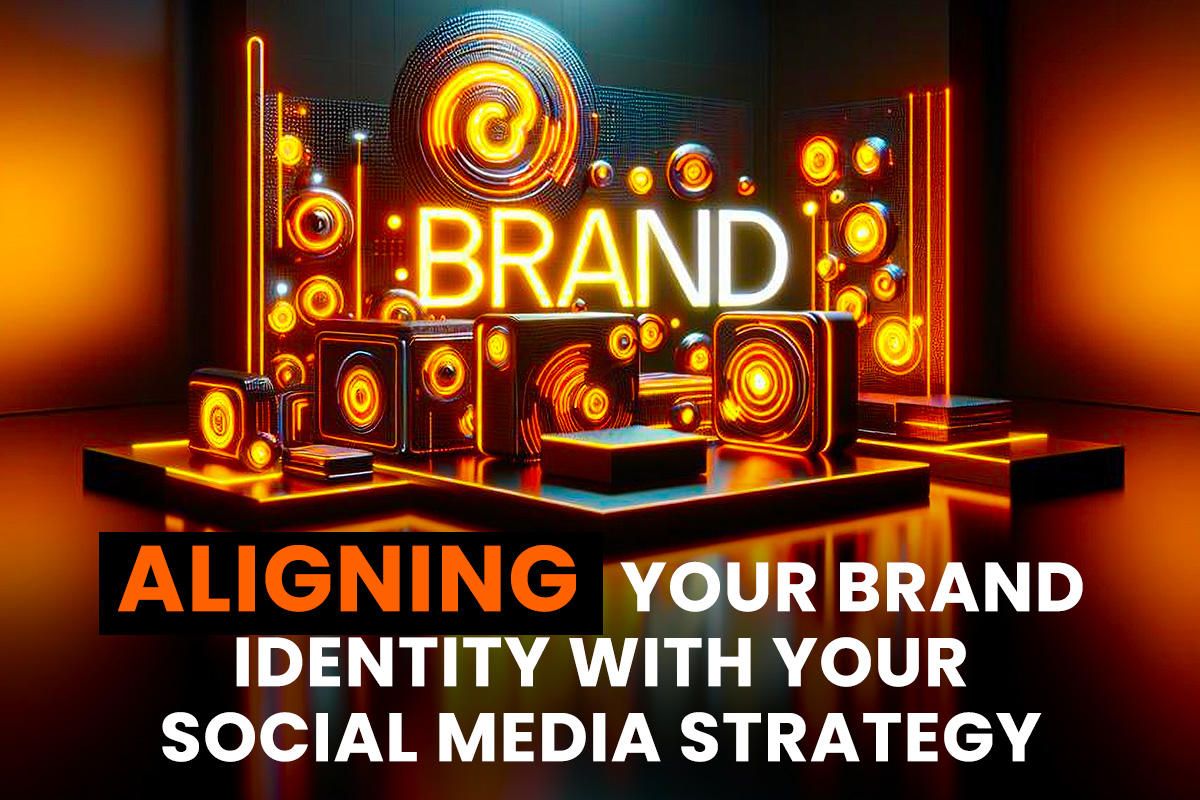
Aligning your Brand Identity with your Social Media Strategy
As of July 2021, there were 4.48 billion active social media users, taking up 56.8% of the global population. Social users increased by 13.1% last year, which can be attributed to Covid restrictions and enforced lockdowns across the world.
As over half of the world regularly uses one social media platform at least once a month, many marketers and firms have to leverage the increase in social media activity. Consequently, quite a few have come up with innovative campaigns and transferred their budgets from traditional channels to social media. However, a few social media marketing trends sound like bad news for businesses. Notably, engagement and impressions seem to be declining as most channels’ algorithms are discriminating against social media posts from businesses.

That means if you don’t have a clear, relatable brand on social media, your company—your brand becomes part of the noise. By 2025, there will be 175 zettabytes of data in the global datasphere.
With roughly 2.5 quintillion bytes of data we produce daily, it is challenging to cut through the noise and deliver your content to your audience. The growing popularity of IoT (Internet of Things) makes this data creation rate become even greater.
Social Media is a Primary Channel for Brand Research

Marketers will probably take an interest in the fact that globally 71.6% of internet users now search for brand information on social platforms.
https://influencermarketinghub.com/social-media-marketing-benchmark-report/#toc-4
To understand how integrating both organic and paid social media strategies can enhance your brand identity and drive consumer engagement, read the article Organic and Paid Social Media: Integrating Both Strategies.
So how to stand out from the quintillions of posts on social media every day and also create a brand that people can connect with?
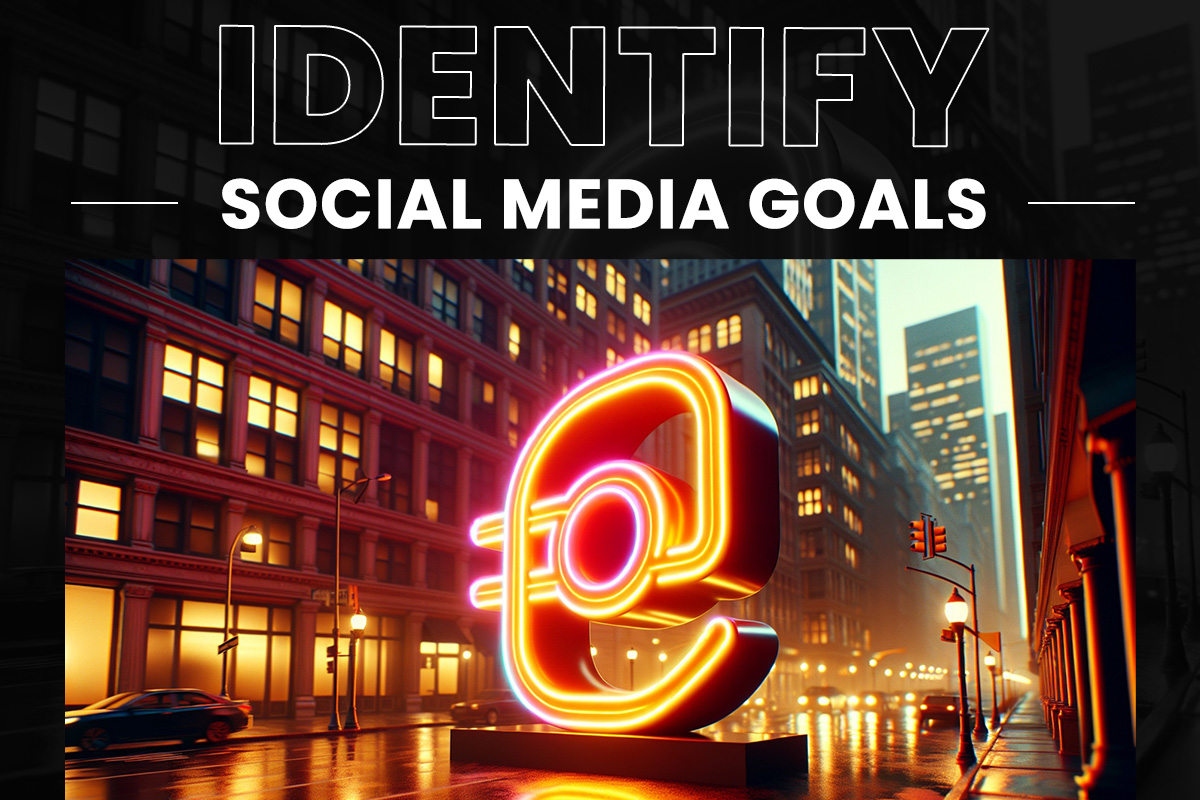
Identify social goals for Brand Identity
You are shooting in the dark without clear social goals, wishing people will notice your brand. If you’re still trying to define your goals, don’t fret. You are not alone as nearly half of marketers find it challenging to align their social campaigns to their company goals. Social media goals vary as they are tied to a company’s overall marketing objectives.
Defining your goals holds you accountable, sets your budget, maximizes your resources, and can help track your metrics. The social media goals below can help you leverage your social media marketing efforts:
Increase brand awareness – It means getting your target audience to know your brand. With people spending an average of 2 hours on social media every day, it’s without a doubt that this is one of the top places to attract your consumer’s attention.
Generate Website Traffic – The right strategy can generate website leads or traffic to your website through social media. According to Social Media Examiner, 87% of marketers claim they use social media to increase web traffic. Whether it’s through promotional posts or social ads, tracking conversions and URL clicks can help you identify your ROI better from social media.
Drive leads and sales – With the huge number of people you can reach on social media, this platform can be incredible for warming up your customers to your business and ultimately getting them to purchase. Followers don’t make purchases accidentally. Consumers are using social media to search for brands before purchasing.
Increase your audience – Adding new followers into the fold can help boost your revenue. You can use social media to turn your followers into paying customers. To grow your audience, you must find ways to introduce your brand to folks who haven’t heard of you before. Expanding your fan base can also mean discovering conversations around your niche and industry. It will allow you to uncover potential demographics and reach adjacent audiences.
Improve community engagement – 46% of consumers think brands that interact with their audience are the best. Community engagement is the second top priority of social marketers as it improves brand perception, loyalty, and referrals. It pays to experiment with your messaging and content to get your audience excited and engaged and ultimately, become your brand ambassadors.
Create a social media plan
Your social media plan will guide your actions and track your success. It doesn’t have to be high and lofty. Keep your social media concise, specific, and attainable. The first step to creating a winning strategy is to determine your goals. Without goals, you have no way to track your progress and ROI. Once you’ve identified your goals, you can proceed to the following:
Monitor important metrics: Focus on meaningful metrics that provide value to your goals. These metrics include engagement, click-through, bounce, and conversion rates. Your metrics should align with your overall social media goals and marketing objectives. This makes it easier to show the value of your efforts.
Create an audience persona: An audience persona helps you create content they will relate to and engage with. When building your target customer, consider defining their age, location, average income, job, interests, purchase behavior, etc.
Learn from your competition: Everyone is on social media, and that includes your competition. Benchmark what they are doing finetune their strategies and apply them to your campaign.
Conduct a social media audit
Auditing your social media allows you to see a clear picture of your existing social efforts and uncover an effective way to improve your strategy. Check all your social media accounts, ensure that each account is complete and consistent with your branding, determine your best post, determine each channel performance, and understand your audience in each network. When you’re done, you will have a single strategy document for all your social accounts, with valuable insights you can apply to your social media plan.
Schedule
Building a social media calendar comes after you’ve determined your goals and identified which content is getting engagement and impressions. A content calendar lets you visualize your ideas and organize them for easy distribution. Additionally, don’t hesitate to repurpose and schedule content across multiple channels to optimize engagement. Bear in mind that there are best times to post on each platform depending on your target demographic’s location.
Whether you are a new or well-established brand, social media is a valuable tool to grow your audience, drive website traffic, and boost leads and sales. Building your brand on social media may be daunting and overwhelming. However, with the right preparation and team, you can get ahead in the game and rise above the competition. The content you share on social media can turn your followers into your brand ambassadors. With the right strategy and implementation, you can reap the benefits of social media for your business.

